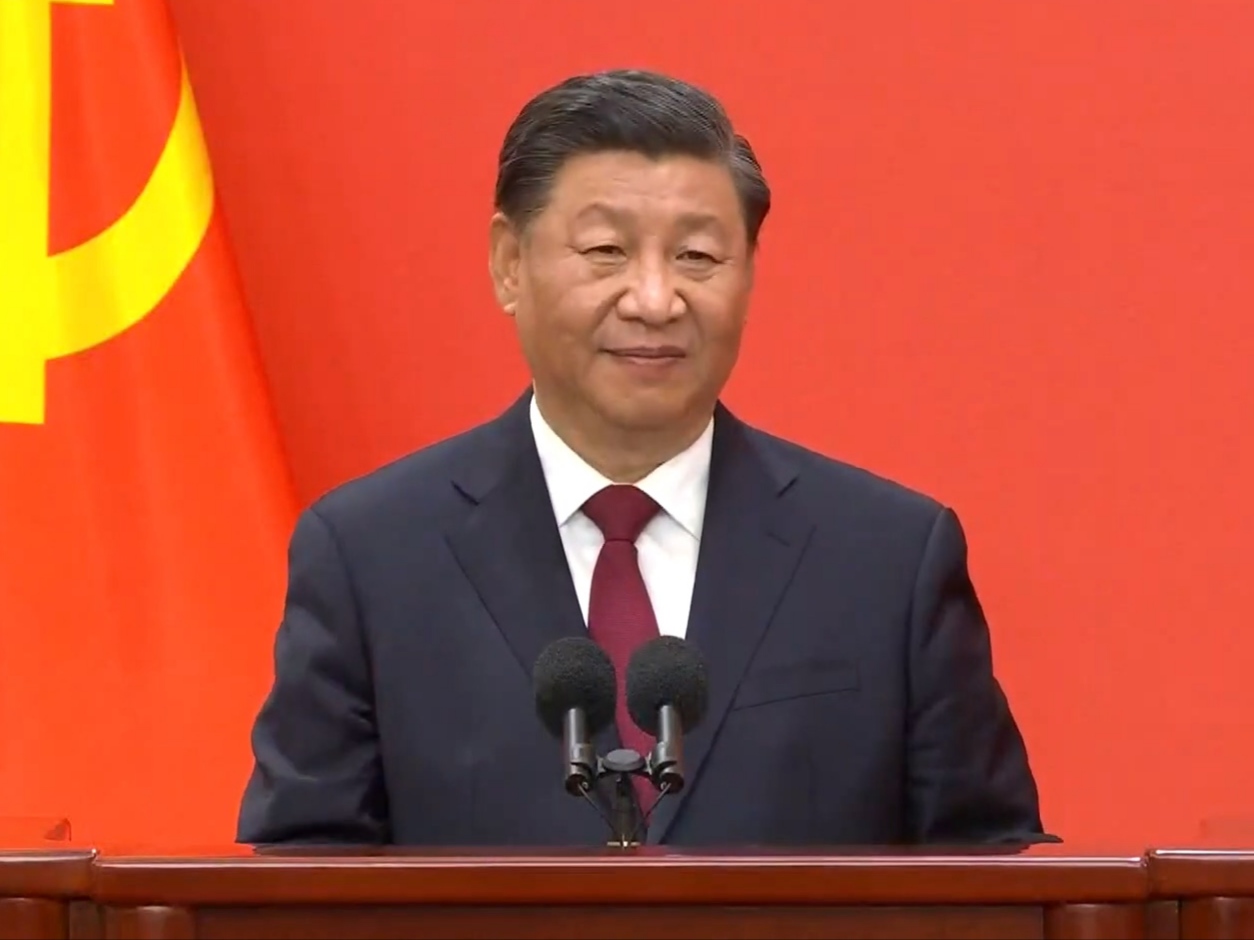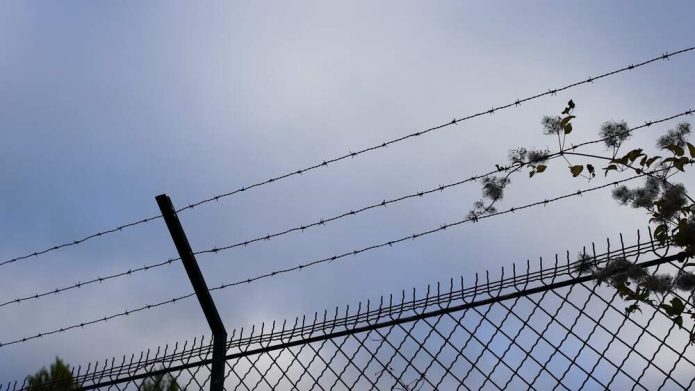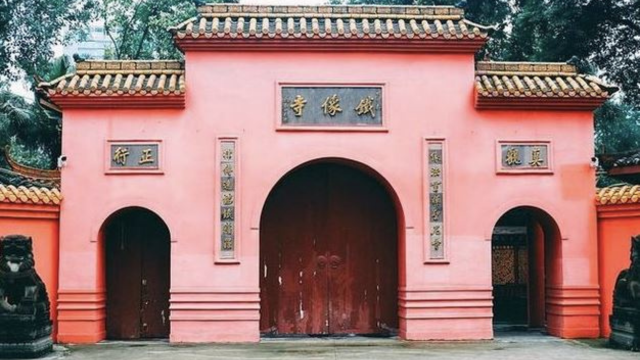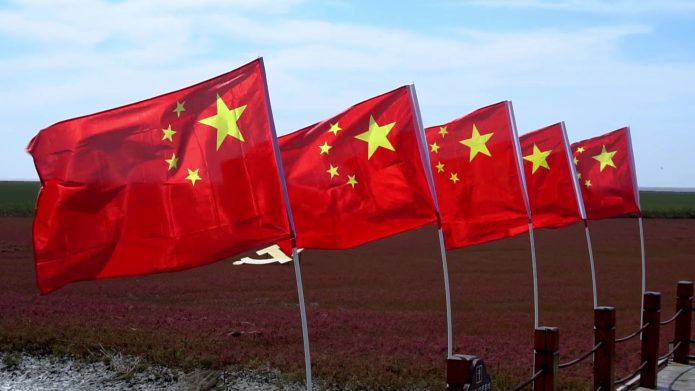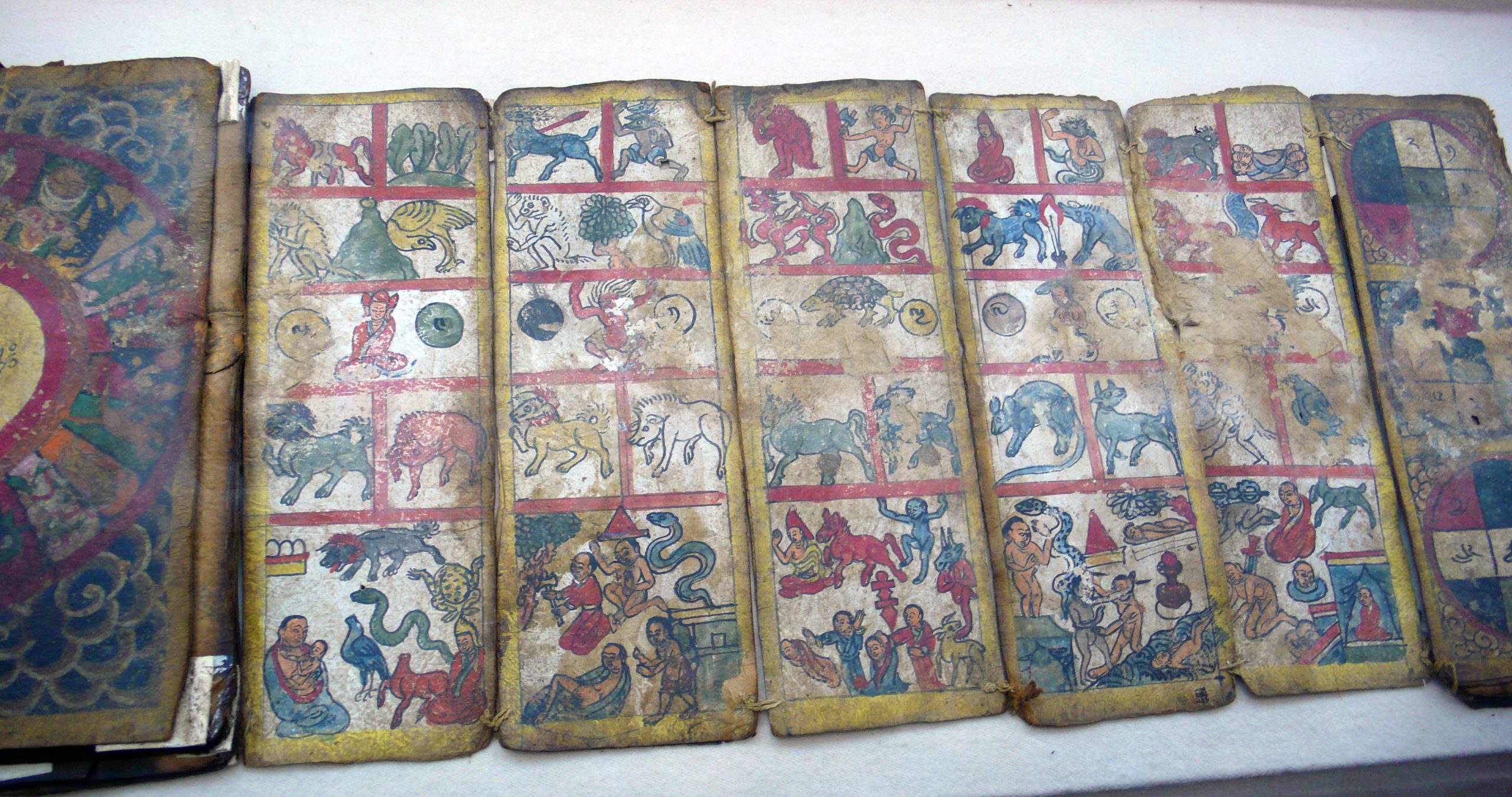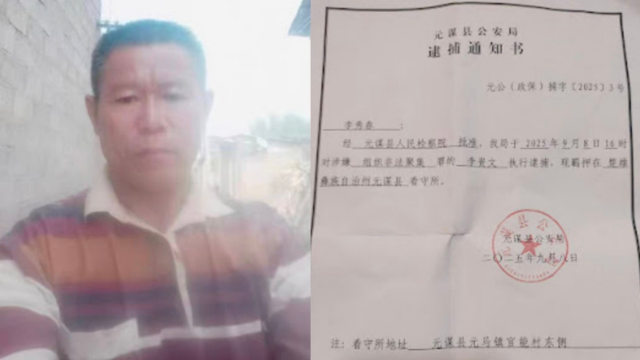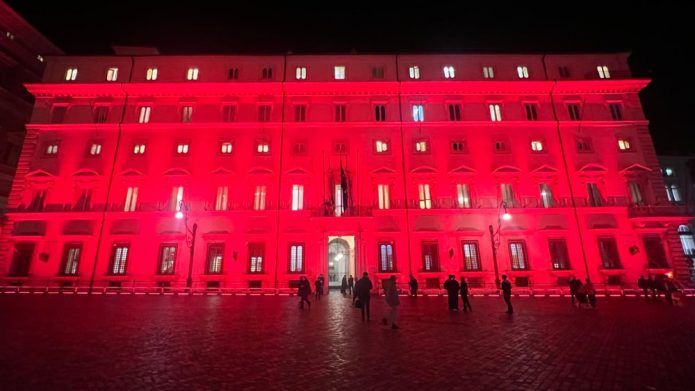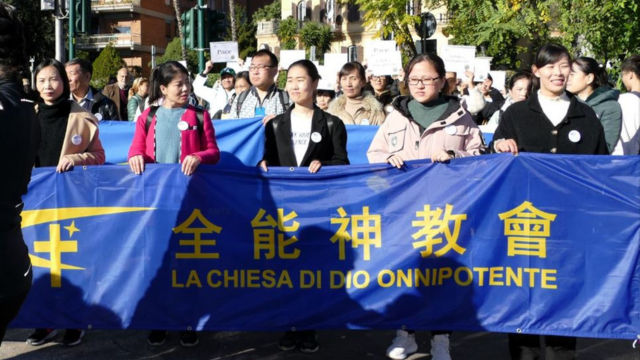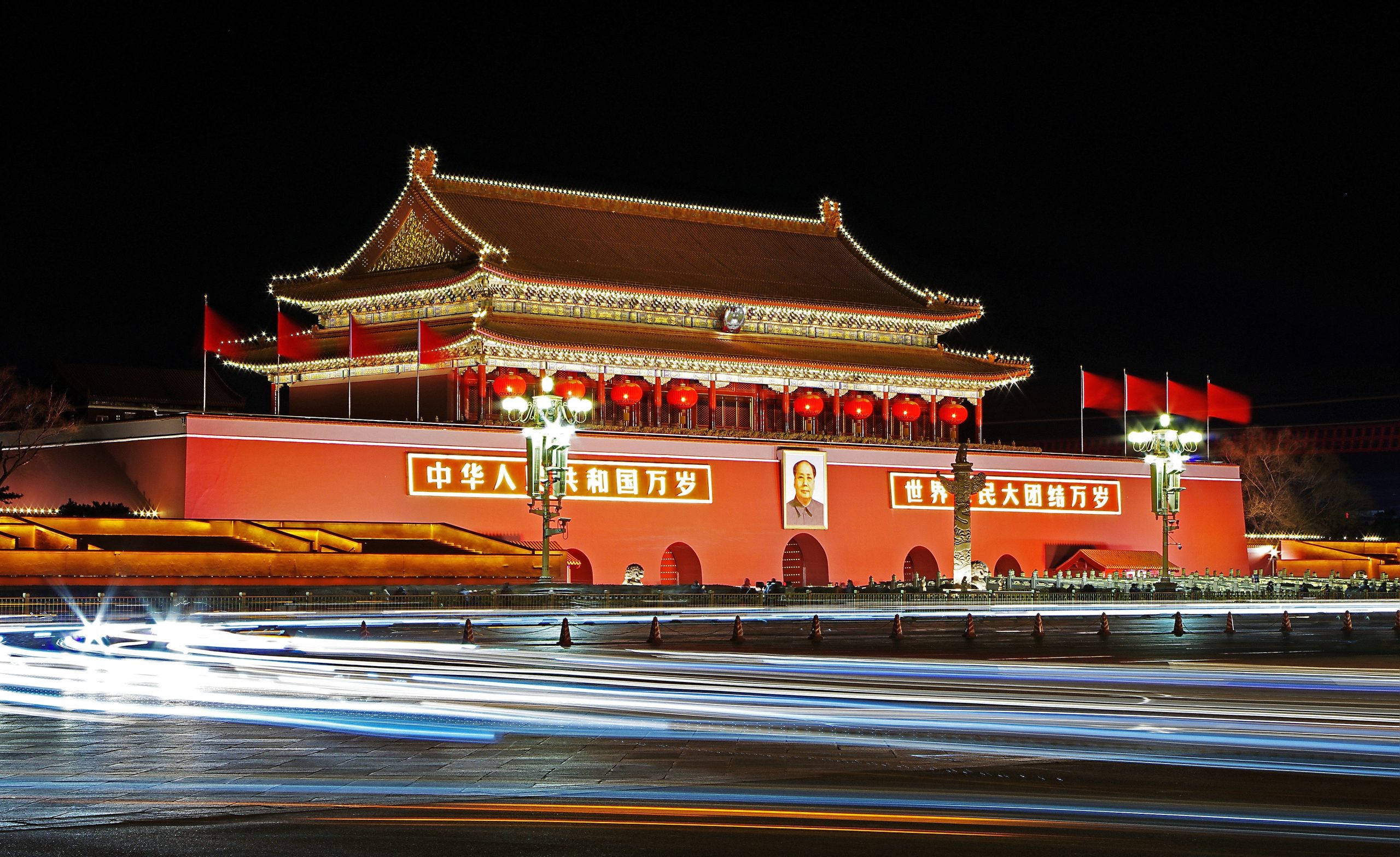A digest of persecution in China for August 22, the International Day Commemorating the Victims of Acts of Violence Based on Religion or Belief.
by the editors of Bitter Winter

Christianity
From January to April 2020, crosses were removed from at least 250 Three-Self churches in Lu’an, Ma’anshan, Huaibei, and other cities in the eastern province of Anhui. A local believer told Bitter Winter that in November and December last year, crosses were removed from 22 Three-Self churches in Bozhou, Huaibei, and two other cities.
“All Christian symbols are ordered to be removed as part of the government’s crackdown campaign,” a state employee from Ma’anshan city told Bitter Winter.
Please read the full text: Crosses Removed from over 250 Churches in Anhui Province
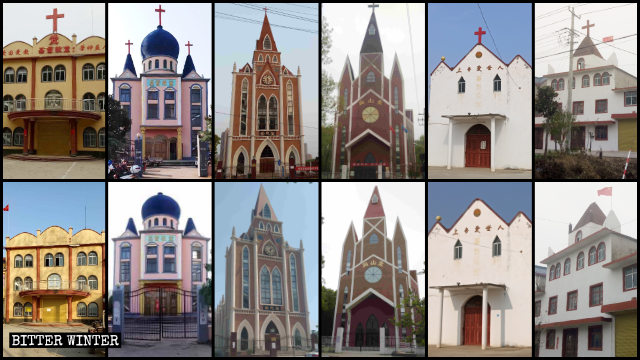
The so-called gray market, which encompasses congregations and places of worship that are neither legal nor explicitly banned, is the largest segment of religion in China and is now increasingly suppressed by the CCP. Last year, at least 162 such venues were shut down in Jilin, a northeastern province in neighboring North Korea.
According to several internal Jilin government documents, in 2019, the province kept on track thoroughly implementing President Xi Jinping’s directives on religious work: ascertaining information on religious venues through secret investigations, and shutting them down. They spent considerable time collecting and sharing experiences from across the country on “rectifying” house churches. The government also issued multiple documents last year to intensify crackdowns on Christian groups, in particular on those house churches that are associated with South Korea.
Please read the full text: Jilin Province Shut Down Over 160 House Church Venues in 2019
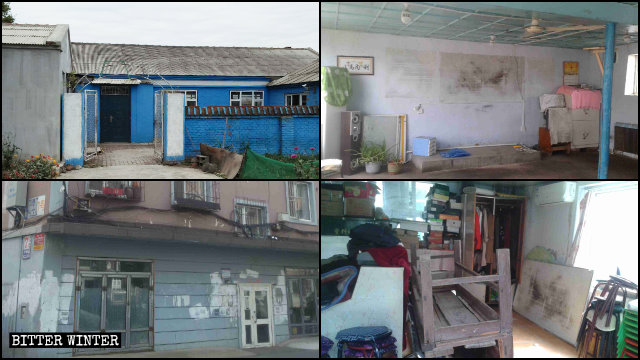
As Bitter Winter has repeatedly reported, members of The Church of Almighty God (CAG)—the single most persecuted religious movement in China—are routinely tortured and mistreated for the sole reason that they profess and propagate their faith. Quite often, torture is used to make them renounce their faith, or disclose information about fellow believers and the CAG.
Li Yi, 56, was arrested twice for proselyting on behalf of the CAG some years ago, and she was interrogated and tortured to make her divulge information. “Three police officers pressed my face to the ground, while a fourth one was viciously hitting my back and legs with a 50-centimeter long stick, thick as a rolling pin,” the woman told Bitter Winter. “This lasted for at least three hours until my entire body became black and blue. The officers did not stop until they became tired, and I lost consciousness.”
She was slapped on her face with a shoe, her face turning red and swollen, blood seeping from her mouth. “They dragged me by the hair, pulling some out and knocking my head hard against a chair, which made me feel dizzy,” Li Yi continued. “I still have a bald patch on my head where no hair grows.”
Please read the full text: Church of Almighty God Members Tortured for Their Faith
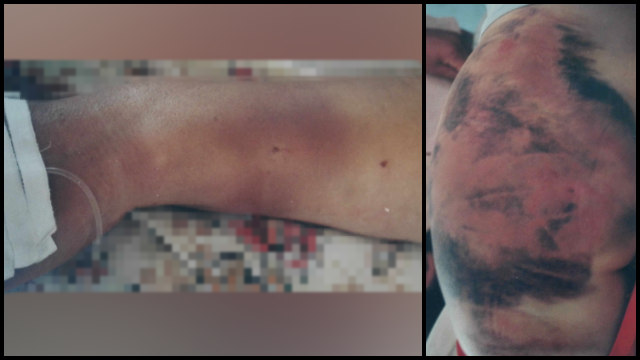
Roman Catholicism
For people of faith, being buried according to religious rites is of the utmost importance. In China, however, such wishes of the deceased are becoming hard to fulfill, since the totalitarian regime imposed increasing bans on religious funerals. To curb the influence of faith on China’s residents, even religious symbols from tombstones are being removed.
On April 16, four government officials came to the Linjiayuan Catholic Church in Wenzhou city’s Cangnan county in the eastern province of Zhejiang. They ordered its director to remove the characters for “father” from the tombstone of John Wang Zhongfa, a priest who ardently opposed the CCP’s interference into affairs of the Catholic Church, who was buried in a nearby cemetery in 2017. The officials threatened to destroy the monument if orders were disobeyed. They also instructed to disassemble the roof and floor of a structure used for holding Mass in the cemetery, and convert an adjacent building used by the clergy to change before services into a public toilet. The director had no choice but to do as ordered.
Please read the full text: Catholics Disallowed Religious Funerals
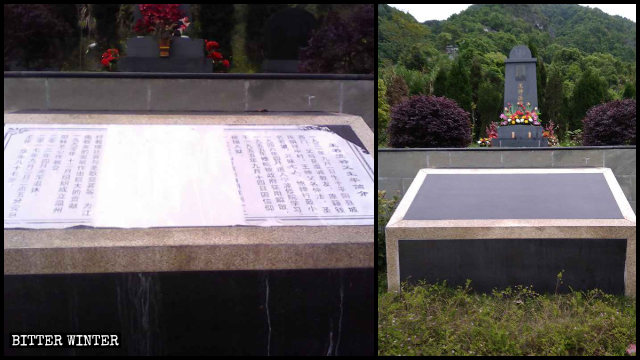
After the signing of the Vatican-China Deal of 2018, the situation of Catholic conscientious objectors who refuse to be registered continues to deteriorate: clergy members and believers are frequently harassed and persecuted, churches closed down or demolished.
But even state-controlled Catholic churches are not left alone.
Last June, the government of Linyi, a prefecture-level city in the eastern province of Shandong, ordered to demolish a state-controlled Catholic church, claiming that it “occupied too much space.” The officials also said that they would be dismissed if the church continued to function.
Two months later, a two-story annex to the church with over 30 rooms was torn down. In November, the person in charge of the church was informed that the church building was spared for the time being, but it would be eventually converted into a service center for CCP members.
The village committee soon took over the church. Religious statues and crosses were removed, and a sign “Service Center for Party Masses” was displayed above the front door, transforming the church, which was built at the cost of 4 million RMB (about $ 560,000), beyond recognition.
Please read the full text: Catholic Churches Continuously Curbed Across China

Tibetan Buddhism
According to some sources, the Lingyan Temple (translated as the Temple of the Spiritual Rocks), also known as Jile Temple (the Temple of Ultimate Happiness), in Hebei Province’s Shijiazhuang city was built in early Sui Dynasty (581-618). It was renovated during Ming (1369-1644) and Qing (1644-1911) dynasties. In November 2002, the Chinese government approved the temple as a religious activity venue.
The temple’s Tushita Palace was built in recent years in the style of traditional Tibetan Buddhist architecture, modeled after the Potala Palace in Tibet—the winter residence of the Dalai Lamas from 1649 to 1959 and a World Heritage Site since 1994. The temple became known as the “Little Potala Palace.” The Tushita Palace was destroyed in November last year.
Please read the full text: A Popular Tibetan Buddhist Palace Demolished in Hebei
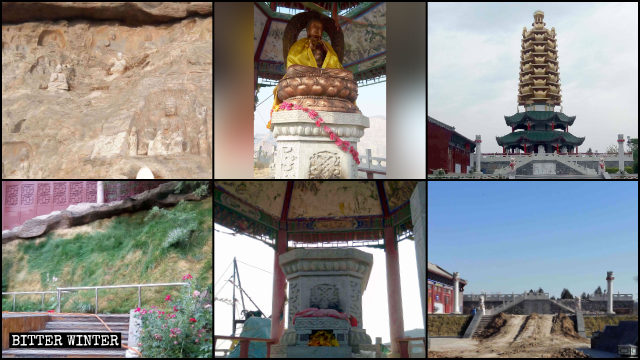
Buddhism
The Shengquan Temple in Yi county under the jurisdiction of Baoding city in the northern province of Hebei was built originally in the West Han dynasty (202 BC–8 AD). Renovated in 2016 with the government’s approval, the temple attracted believers and tourists alike. But not for long: the county government joined forces with the Public Security Bureau and dispatched over 200 personnel to demolish it as an “illegal construction” on April 20. Five excavators turned the temple into ruins.
Please read the full text: Hundreds of Policemen Sent to Demolish Buddhist Temples
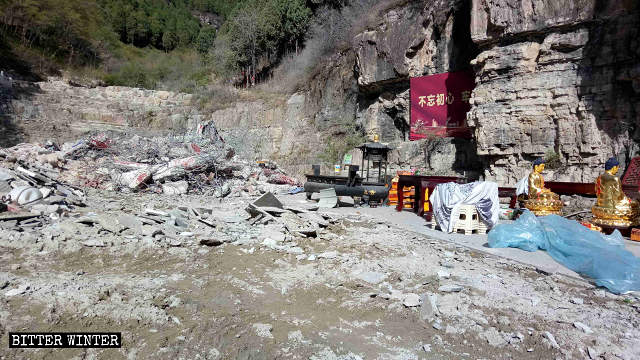
As soon as the coronavirus lockdown has been lifted, local governments throughout China returned to demolishing large outdoor religious icons. In mid-April, Lin county government in the northern province of Shanxi set up a special group, consisting of representatives from the county’s United Front Work Department (UFWD), Public Security Bureau, and other government institutions, to eliminate outdoor Buddhist statues. One of its first targets became a three-faced Guanyin statue on the territory of the Yiju Temple.
A crane was brought in on April 28 to remove the 14-meter-tall icon. The demolition was completed in four days at the cost of 900,000 RMB (about $ 130,000)—almost the same amount spent to build it (over 1.1 million RMB).
Please read the full text: ‘We Choke with Silent Fury’
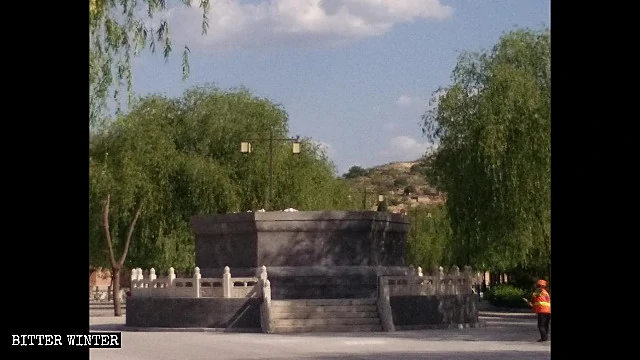
Islam
The Yuehai Great Mosque in Yinchuan, the region’s capital, is one of the iconic buildings in Ningxia. It was celebrated for its exquisite structures and unique characteristics, and four 68-meter-tall minarets surrounded its main white-colored building. According to a Hui Muslim resident, the government sent workers on June 28 to start “sinicizing” the mosque. Two days later, scaffolding surrounded the four minarets intended for removal. The authorities ordered to finish the rectification in two months.
Please read the full text: Mosques ‘Sinicized’ in Ningxia Region, Jilin and Henan Provinces
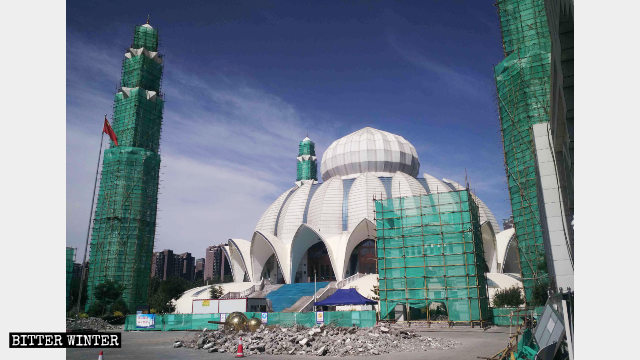
Shorat Zakir, the Chairman of the Xinjiang Uyghur Autonomous Region, declared in July last year that more than 90 percent of the Uyghurs detained in transformation through education camps had been released and “found suitable work to their liking.” But more and more facts prove that these people have not been freed. They are subjected to forced labor instead, and the state strictly monitors their every move. It is a new form of detention, which brings financial benefits to the government.
A government employee from the region’s capital Urumqi told Bitter Winter that the industry park in the Midong district also employs Uyghur laborers from camps. Some are also sent to work as naan bread makers in a cultural-industrial park in Urumqi. They work behind display windows for visitors to see them. The park claims to be reducing poverty, having transferred 400 Uyghurs as “surplus laborers” from southern Xinjiang at the start of last year.
Please read the full text: Are Uyghurs Really Freed from Internment Camps?
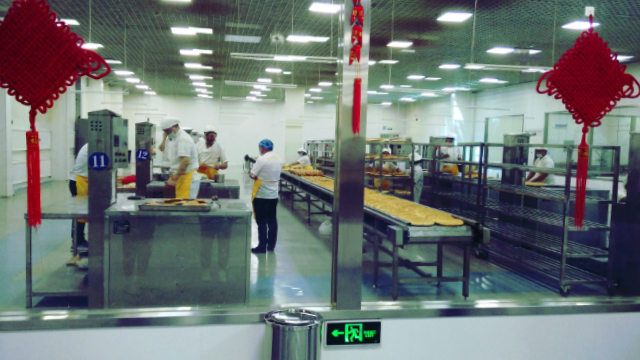
Taoism
The grey-haired Taoist priest from Xi’an city in the northwestern province of Shaanxi no longer has his hair bun, traditionally worn by Taoist masters. The hairstyle is jokingly called “cow nose” for its resemblance to the nose of a cow. The elderly man told Bitter Winter that local government officials started forcing all Taoist priests who do not have state-issued certificates to cut their hair buns.
Please read the full text: Cultural Revolution Returns: Everything Religious is Purged
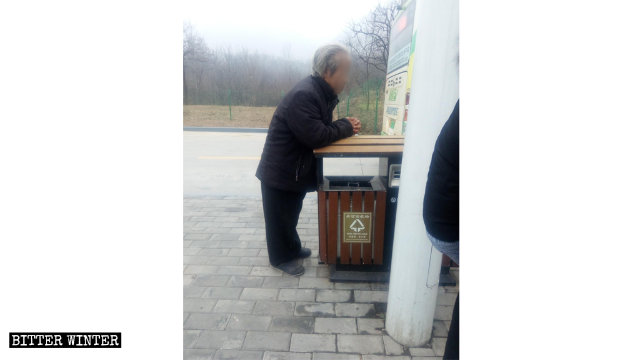
At 6 a.m. on November 23 last year, over a dozen government officials and demolition workers from Yanshi city in the central province of Henan came to a small Taoist temple on a hill to demolish it.
The 72-year-old temple owner was still asleep, when the officials and four young men kicked the temple’s door open. Without showing any documents, they held the owner’s arms behind her back, covered her head with clothes, and forcibly dragged her outside and down a hill. The woman was screaming that she was choking, but men continued to drag her until she lost consciousness. The neighbors who witnessed the scene pleaded with the officials but were only rebuked.
Please read the full text: Believers Beaten and Injured Trying to Protect Their Rights
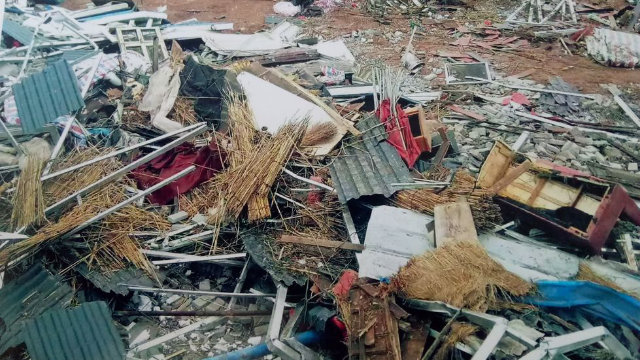
Falun Gong
In 2019, according to a detailed report released by the movement, 96 Falun Gong practitioners were persecuted to death in China, bringing the total death toll from 1999 to 4,363. Their age ranges from 28 to 87, and 53 of the victims are female. 19 died in police custody, some a few hours after their arrest.
One 41-year-old woman, Ms. Li Yanjie, fell to her death on December 7, 2019, while trying to escape with her husband from the window of her sixth-floor apartment the police was entering. They used a rope made by tying several bedsheets and curtains together. The rudimental rope broke. Her husband was able to survive the fall and escape, but Ms. Li died.
Other practitioners died of exhaustion in their homes, after years of arrests, imprisonment, torture, and harassment,
Please read the full text: 96 Falun Gong Practitioners Persecuted to Death in 2019.
In July 2020, in what appears to be a remake of the fake news campaign launched against The Church of Almighty God after the McDonald’s murder of 2014, the CCP claimed that Falun Gong was responsible of two murders in Vietnam. In fact, the assassins belonged to an independent religious group, led by one Ms. Phạm Thị Thiên Hà, who was sentenced to death, and their beliefs were different from Falun Gong’s, although it is possible that the leader had been interested in Falun Gong in the past. The incident was used in China to promote a renewed crackdown on Falun Gong practitioners.
Please read the full text: The “Corpse-in-Concrete” Case in Vietnam: Fake News Against Falun Gong.
Folk religion
Indigenous folk religions are deeply rooted in China’s rural communities, and they help preserving local culture, customs, and traditions. Harshly suppressed during the Cultural Revolution, these venues now suffer a new wave of crackdowns nationwide under President Xi Jinping’s rule.
Since April, the government of the northern province of Hebei has been cracking down on folk religion temples in its rural communities. Bitter Winter has already reported about the destruction of 85 venues since April in the province’s prefecture-level city of Handan. According to newly received information, the number of the destroyed temples had risen to 104, and 110 temples were shut down or repurposed.
Please read the full text: Numerous Folk Religion Temples Destroyed in Henan and Hebei
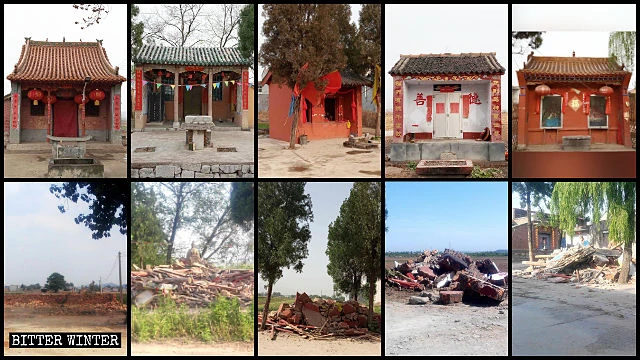
Source: Bitter Winter



